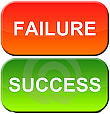The Steps for Managing a Procurement Team (Part 1st)
 Right understanding and use of the procurement management process requires good knowledge in the field of project management. Despite the importance of procurement team management, very little attention is often paid to procurement training and consultancy regarding effective use of team organization techniques.
Right understanding and use of the procurement management process requires good knowledge in the field of project management. Despite the importance of procurement team management, very little attention is often paid to procurement training and consultancy regarding effective use of team organization techniques.
As a team leader or procurement manager, you should know there are several major steps that you can go through to organize a productive procurement group which is able to accomplish tasks and duties in a collaborative environment. Let’s get a more detailed look at the basic steps of procurement team management.
Step #1. Build a procurement team
Building a procurement team is a subsidiary process that requires a widespread variety of managerial skills of a person who is in charge of managing a procurement team. Often this person is a procurement manager responsible for identifying those people with the right skills and talents who are able to communicate with suppliers and vendors and treat purchasing agreements in strict accordance with existing corporate rules and contract management standards.
So you need to make a choice between both types of team. According to PM Book, which covers the fundamentals of procurement management, in order to make that choice and build a team that is capable to complete project tasks on schedule and on budget, you can go through the processes of Forming, Storming, Norming and Performing. Then you need to identify and develop tasks for your team and manage an existing working environment.
Step #2. Lead the team
Leadership of a procurement management group requires the purchasing manager to act in a variety of roles. That manager needs to be an expert in contract management services, an an inspiration to team members and internal customers, an advanced user in purchase management software, a reliable subordinate to senior management and a trusted person of vendors.
You need to be flexible in making decisions regarding the leadership of your procurement group. Your procurement management plan should be a set of leadership techniques and methods to be applied in different situations. Within the working environment of your procurement managing group, there is a need to switch between the styles, adapt to differing circumstances, and do all this without being a source of confusion to members of your group.
As a procurement manager, you need to learn how to find balance in various mutually contradictory demands and contract management services. You need to understand the basics of procurement management and leadership theory in order to do this.














